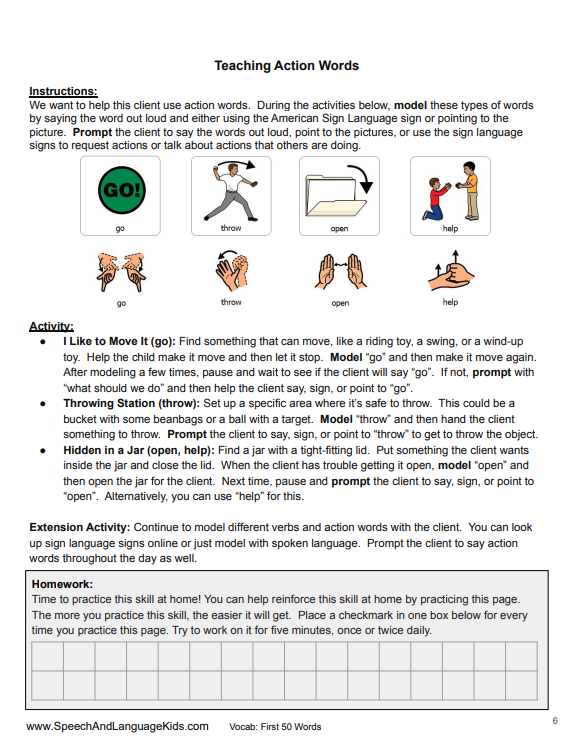Parent & Caregiver Training in Early Intervention Speech Therapy
SLPs get lots of clinical experience, but so much of working with infants and toddlers is about parent and caregiver education! This is often a skill we learn on the job… let’s talk strategy! Ayelet joined us live to share her top strategies. #speechieshow
Below are the links to the products that were talked about in the Speechie show:
- Strength in Words podcast
- DIY activities eBook
- Building Language Opportunities eCourse
- Speech and Language at Home – free monthly calendars
- Let’s Talk: Infants & Toddlers Facebook group
- Teachers Pay Teachers
If you’d rather listen to the audio version of the Speechie Show, click here:
Or if you prefer to read the transcript, see below:
Welcome to the Speechie Show! Being a speech-language pathologist often means having too much work and not enough planning time. To beat the overwhelm, we’re bringing you the tricks and tools that will make your job a little bit easier.
Carrie: Welcome to the Speechie Show. I am your host Carrie Clark from SpeechandLanguagekids.com and I’m here today with Ayelet. Ayelet is from strengthinwords.com and we are here today to talk to you about parent training and early intervention and how you can get families on board with that therapy. Which is so critical for that age because that’s where you’re going to make the progress. So welcome to the show we’re glad to have you today.
Ayelet: Thanks for having me.
Carrie: if you guys are new to the show this is the Speechie Show. We do this once a week and this is our chance to hop on and share some tips with you on a specific topic. We have a new speech language pathologist come on with me every week and we do this on Monday afternoons on Facebook Live. So welcome if you’re here on Facebook Live with us right now. If you are just joining us we are talking about parent training for early intervention. So, if you are on here with us live right now go ahead and type in what ages you’re working with so we can make sure we are getting the right information to you today. And while they are doing that will you go ahead and give us a little bit of information about you and your background.
Ayelet: Sure. So, I am currently in private practice and I work primarily with infants and toddlers and preschool-aged kiddos. And I have worked in the past in the schools, contracting with the schools, and doing lots of AAC, and doing lots of intervention with non-profits, clinic-based and home-based. And I love that, those early communicators. It’s so fun. And then I also run strengthinwords.com, which is a podcast and a Blog and a whole number of online-based resources. Including courses and curriculum for parents, caregivers and Speech & Language Pathologists, and just other professionals who work with infants and toddlers.
Carrie: Excellent. So, when we put this recording up on the website over at speechandlanguagekids.com, we will have links to all the resources mentioned today and the strengthinwords.com website that you are running. So, we will have all that for you and try to put those in the comments section of this Facebook Live, as well, so you have them. Alright Jenny said she’s working with Age 3. If you were on Facebook Live go ahead and type in what ages you are working with right now so we know what kind of spread we have here today here on Facebook Live with us. Okay while you’re doing that we’re going to go ahead and get started with our Five Points. So, we have five tips to share with you today that are going to help you on your journey of having parents help with this therapy process and create that real meaningful change that we need to see in our early intervention students. So, our first tip today is to use useful distilled bite-sized pieces of knowledge for our families. Ayelet tell us how that looks in practice.
Ayelet: Sure. So just to say, parents and caregivers of any infant or toddler, whether they are having any kind of developmental delay or not, we are all feeling vulnerable, undervalued, and we often lack confidence for them. We live in this super crazy digital world where we have access to all kinds of information and it’s way too overwhelming. So again, parents want that distilled bite-sized nuggets that they can just digest. So, they want to learn about the ways that they can interact with and their little ones. So, we especially have to teach them about basic terminology and basic Child Development information. So, you know what joint attention and scaffolding are. What object permanence is. And then how do they relate to how their child learns in a meaningful way. I think we often go straight to that work or play therapy without taking the time to help parents understand what on Earth we are doing, and why. Which is of course, why it looks like we are just playing with our children. But when we take the time to really look at and give those terms and show them examples of what we’re doing, we are doing a great, great service to our therapy.
Carrie: Yes absolutely. So, you are working with these parents, you are sitting down, and instead of just sitting down and starting to do your joint attention activity, talk about what joint attention is and give them some information about what that means and why it’s important to work on it. I feel like a lot of times parents just see, like you said, just playing, and they think well that’s no different than what I do and so they kind of tune out and don’t see it as something meaningful that they should try to do. But if you can explain kind of what’s going on behind the scenes and what you’re really targeting that can really help parents get on board with the process.
Ayelet: Yes
Carrie: Wonderful. So that’s our first tip. The next one then is going to be to earn trust. And that is so huge with this. A lot of times you’re coming into these family’s homes, you’re telling them that they’re doing it all wrong. I know that’s not the way we try to approach it but that’s how it can feel for a parent. So how do we build trust with these families that we are working with?
Ayelet: By simply having that credential and walking into a home or a clinic is just not enough exactly. So, we have to earn that trust by number one, recognizing and labeling their fears and concerns. So, spell out what you’re doing and let them try it. I think we tend to go straight to building repertoire with the child, which is huge but we also forget to build a repertoire with a caregiver. So, when you are doing an activity …click here to read the full transcript.
Get More Resources Inside The Hub:

About the Author: Carrie Clark, MA CCC-SLP
Hi, I’m Carrie! I’m a speech-language pathologist from Columbia, Missouri, USA. I’ve worked with children and teenagers of all ages in schools, preschools, and even my own private practice. I love digging through the research on speech and language topics and breaking it down into step-by-step plans for my followers. I graduated from Truman State University in Kirksville, MO with a masters degree in Communication Disorders.
Connect with Me:







Leave A Comment